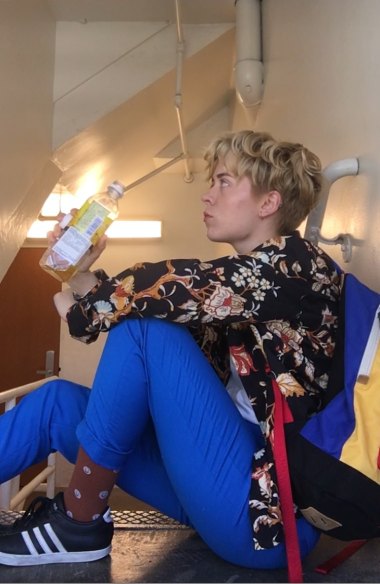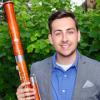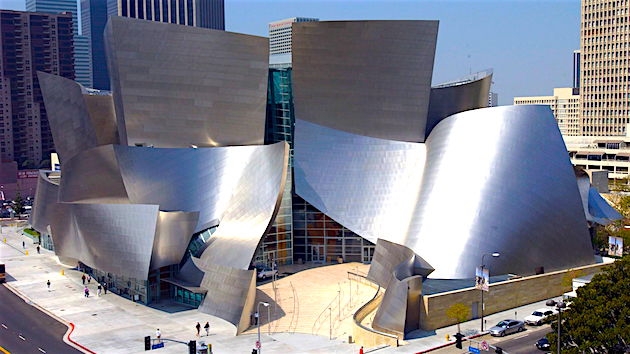
Every year university music departments and conservatories around the world produce a new crop of highly talented, expertly trained would-be professional musicians. In Los Angeles alone, the top list includes UCLA and USC, Cal Arts, the Colburn School.
“They’re the equivalent of top college athletes,” observes Camille Avellano, first violinist with the Los Angeles Philharmonic and a member of the orchestra’s string selection committee. The question is, how hard will it be for these aspiring young artists to succeed in a field that is so competitive? And how much more challenging will their prospects be if their primary interest is in the performance of contemporary music?
We know that only a tiny percentage of musicians will rise to the level of international solo artists. Others may decide to pool their talents and establish musical ensembles. A large number will find a place in a worldwide network of symphony and chamber orchestras. Others may remain in academia. Many — for reasons personal and professional — will fall by the wayside.
The answer for many aspiring young musicians, especially those interested in contemporary music, is Los Angeles. At this moment L.A. represents the most target-rich environment for young musicians in the world — whether their goal is to join a major institution like the LA Phil or to explore the multiple opportunities (and challenges) of a career as a freelance musician.
Ever since the birth of the entertainment industry, Los Angeles has been a Mecca for the all-union studio musicians that record the scores for thousands of films, as well as network, cable, and now streaming television shows, and the ever-expanding realm of video gaming.
A talented young musician that manages to get on the A-list of an orchestra contractor, and consequently joins the American Federation of Musicians Local 47, is well on their way to making it in this town. As the great actor Walter Matthau once observed, “To be successful in show business, all you need are 50 good breaks!”
Los Angeles is Fertile Ground for Contemporary Music
For those musicians with a particular interest in performing contemporary music, Los Angeles offers a wealth of opportunities. A prime showcase is the LA Phil’s “Noon to Midnight” — a continuous (and overlapping) 12-hour marathon of contemporary music performances emphasizing local organizations. In addition to the Philharmonic’s own New Music Group, past programs have included performances by (among others) the Monday Evening Concerts (L.A.’s longest running contemporary music series with roots that date back to the late 1940s), Jacaranda Music, wild Up, Piano Spheres, gnarwhallaby, Kaleidoscope, wasteLAnd, and Yuval Sharon and The Industry, which staged a downtown production of Annie Gosfield’s interplanetary invasion opera War of the Worlds two years ago.
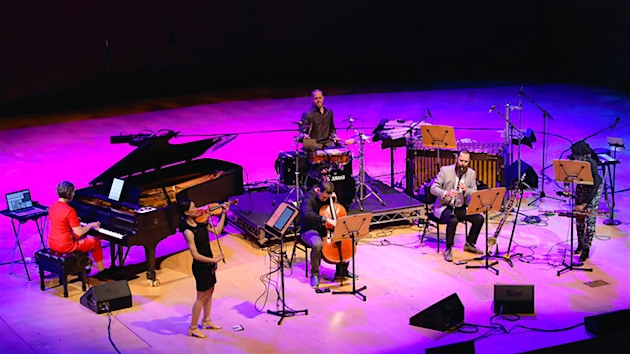
In addition to organizations devoted to contemporary music, the city has seen an expansion of presenting venues that include contemporary music series at Monk Space in Koreatown, Boston Court in Pasadena, Cal Arts’ REDCAT Theater, the Wende Museum in Culver City, and UCLA’s programming at the Theater at ACE Hotel in downtown.
Pianist, Teacher, Mentor
Pianist Gloria Cheng has played a key role for many years in the Los Angeles contemporary music scene, performing on the LA Phil’s Green Umbrella Series, the Monday Evening Concerts, Piano Spheres, and Jacaranda Music. She is currently an Adjunct Professor focusing on contemporary music performance practice at UCLA, where she heads the contemporary music ensemble UCLA Flux.
Her professional career, she says, really started when she made the effort to introduce herself to Zita Carno (then principal pianist with the LA Phil). That introduction led to Cheng working with the LA Philharmonic New Music Group and her introduction to Esa-Pekka Salonen and Steven Stucky, who had established the new Green Umbrella series. It also led, she said, to her decision to join the union.
“Zita urged me to join the union. I said I didn’t think I had much reason to join — it cost too much money, and I didn’t have money. She kept bugging me. Finally, she said, ‘Join the union. I want to give you some work!’ I said ‘Oh!’ After I joined the union, she began hiring me on a regular basis. That union membership sustained me for the next 20 years.”
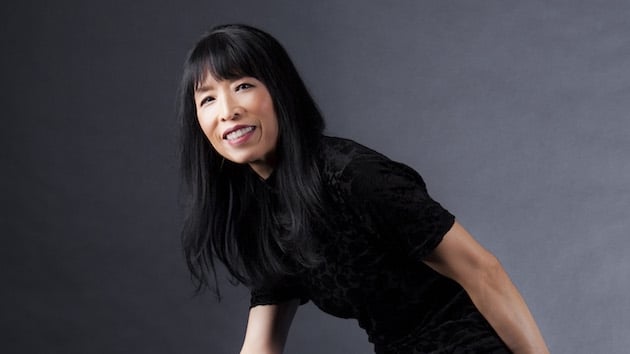
Cheng’s studies with pianist (and Arnold Schoenberg’s amanuensis) Leonard Stein, led to her becoming a regular performer on Stein’s Piano Spheres concerts, as well as the Monday Evening Concerts run by Lawrence Morton, and at the Ojai Music Festival, which he founded. And she has played a key role throughout the 17-year history of Jacaranda Music. As her recording career developed, Cheng championed the piano music of Terry Riley, John Adams, and Steven Stucky.
Now in her role as a UCLA professor, Cheng said, she is doing everything she can to pass on what she’s learned to her students as they begin their fledgling careers.
“It’s a much noisier, crowded world now then it was when I was beginning my career,” she told me. “But in other ways that’s wonderful. There is a wellspring of new groups that have sprouted up in the last five years. That also means there is a lot more competition out there.”
Enter Trio Ukiyo
Three of the members of Cheng’s ensemble UCLA Flux are violinist Xenia Deviatkina-Loh, violist Lu Walstad, and cellist Niall Taro Ferguson. On April 25 they will make their professional debut as Trio Ukiyo performing Andrew Norman’s The Companion Guide to Rome for Jacaranda Music in Santa Monica. The program, which is titled “Vineyards of Myth,” will also feature the West Coast premiere of Bay Area composer Dylan Mattingly’s Six Choruses From The Bakkhai.
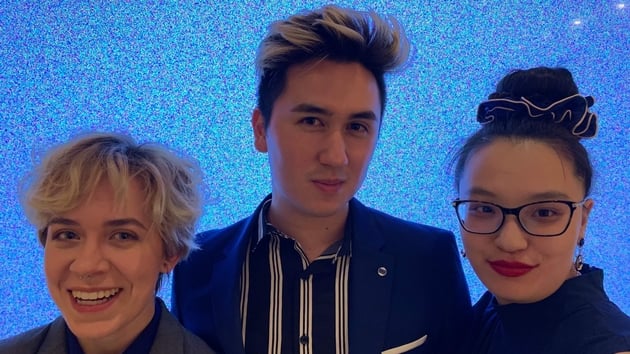
Deviatkina-Loh (the oldest member the group at 28) arrived in L.A. by way of her native Australia and the Royal Conservatory in London.
“I was one of those students who’d spend 20 hours a day in the rehearsal room,” she recalled as the trio members and I gathered over a wood-fire pizza. “I did my college work in Sydney then went to London, which was much like a conservatory. Halfway through my doctorate I decided I didn’t want to stay in London anymore and UCLA felt just right.”
It was there that Deviatkina-Loh began performing with cellist Niall Taro Ferguson, who at 25 is already well along in his career being both a studio session musician and a union member.
“I had my first professional experience when I was still in high school,” said Ferguson, who grew up in L.A. and attended Santa Monica High School. “I had the chance to go to Peabody, but I didn’t know what that would lead to. I already knew about the music industry in L.A. and the type of opportunities that would be available. I decided it made more sense to stay and go to UCLA. I’ve continued to work while I’m going to school.”
It was Ferguson’s introduction to cellist, orchestra contractor, and member of the Lyris Quartet Timothy Loo that provided one of his (50) biggest breaks.
“Tim has been my mentor for the last 10 years. He really helped me to get my foot in the door as a performer and especially as a contract player. I do a lot of session work as a substitute for movies, TV, and video game recording. My teachers at UCLA, especially Gloria, have been very good about extending professional opportunities to students that are really interested and at a level where they are able to handle the pressures of a professional career.
“One of the things that Gloria impresses on her students is that you spend time learning about music administration, the process of putting together concerts and self-promotion. Those are things you won’t necessarily learn in a traditional conservatory setting. But that’s the difficult stuff you’ll really need later on. The earlier you start learning those things the easier the transition into a professional career will be.
“It’s not just advice, it’s a big part of Gloria’s class. In addition to rehearsals we have to work with designers to create a poster and the printed program. We have to write the program notes, work on publicity and stage management, and the documentation of the performance. We even have to arrange the food for the reception!”
New Music Has Become Hip in Los Angeles
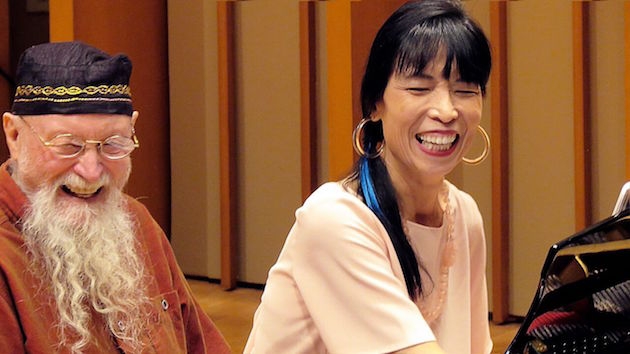
The way Cheng sees it, “The amount of competition in this town is daunting, but it’s also such fertile ground for opportunities. There is a community for the support of new music here that dates back to the 1940s and the Evenings on the Roof series. It means that new groups, like Trio Ukiyo, are in a good place. I think younger musicians appreciate having older mentors (like me) who have trod the same ground. My students play on the Monday Evening Concerts and Jacaranda. And whenever I can, I let presenters know I have a list of very capable young musicians.”
The excitement surrounding the contemporary music scene in L.A. was the main reason Trio Ukiyo’s youngest member, 20-year-old Lu Walstad, headed south from her home in San Francisco.
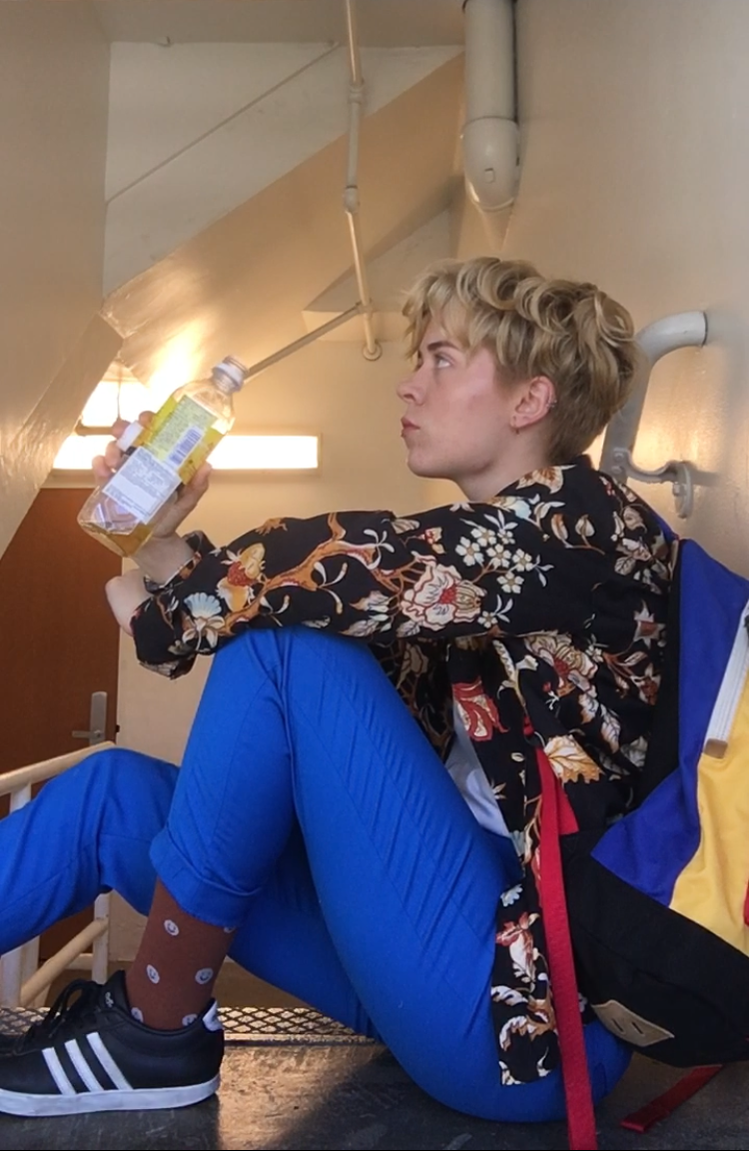
“In L.A., new music is hip and the scene is much bigger than in S.F. That’s why I went to UCLA, which is where I met Niall and Xenia and we started playing together. We know being a string trio with an interest in contemporary and late 20th century means our repertory is limited. But one of the things that we have as an advantage is our friends that are composers and can write things just for us.
“The other thing that’s great about the composers and musicians in L.A. is that they’re so multifaceted and do so many different things both as visual artists and musicians. And in addition to my playing I do a lot of art work. It’s a community that is always helping one another out. People meet. Somebody likes your playing and things happen.”
And what role does social media play?
“It you’re trying to make it as an artist or a musician today, social media is not for fun, it’s part of the work you have to do to promote yourself. My parents ask me why I’m always on my phone or my Instagram? They tell me to get my head out of social media, but I tell them, ‘it’s essential!’”
To Join the Union or Not to Join the Union?
Rick Baptist (a brass player) is Vice President of American Federation of Musicians Local 47, an organization with a roster 6,500 members who are listed in the union’s registry along with a citation describing all the instruments they play.
But as Gloria Cheng discovered, a young musician has to balance her own condition, professional and monetary, before making the commitment to join the union. Problems arise when a player is invited to perform with an organization that maintains a union contract.
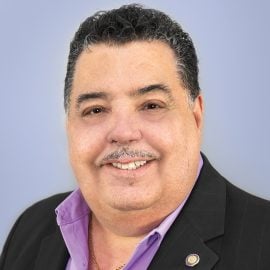
“A young musician can play without joining the union to get themselves known,” Baptist explains. “But then, if they get a call to play a union gig the union will send a notification — a ‘Taft-Hartley.’ At the end of 30 days they will need to join the union. Joining is very simple. You can pay for 6 months or a year for $210.”
That, of course, does not include the mandatory dues. But, Baptist points out, being a union member guarantees that you will be paid.
“Say you’re a symphonic musician: after you work, the contracts are sent to the union payroll department and our business reps. They make sure all musicians are legal in terms of their union standing. If a musician is not in the union, we will contact the contractor and say for this person to play again they have to join the union. If you don’t receive payment for a gig, the union will support you.
“Union membership gets you access to all the major orchestras, the studios, and so many other things, like playing for commercials, television, and touring. We also have what we call a “metropolitan contract” that allows nonunion musicians (such as in community orchestras) to perform with union members.”
As the only member of Trio Ukiyo to be a union member, Ferguson has a unique perspective. And it should be noted that of the three members of Trio Ukiyo, only Ferguson is supporting himself with his music.
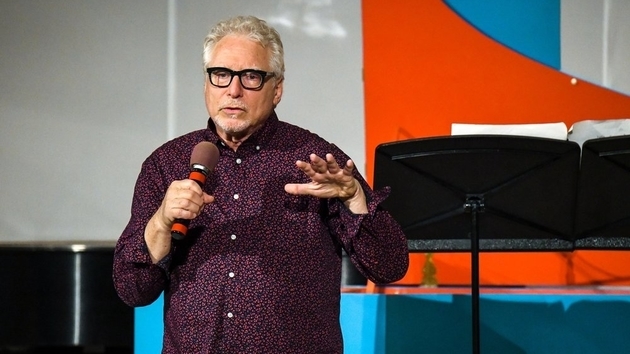
“For a lot of young musicians just starting out, it may not be the right thing to join the union because of the amount of dues you have to pay. And in the beginning you may not be doing a lot of union work. It would be nice if joining the union meant a lot of work would just fall in your lap. But it’s not like that.”
As Gloria Cheng observes, “There are lots of young groups like Trio Ukiyo coming up here. I don’t know how many are able to make a living. But there is a definite interest in new music here and concerts get press coverage. The media in L.A. is very welcoming. I don’t think that combination exists in many other cities.”
In the view of Jacaranda’s Patrick Scott, “L.A. is a magnet for musicians with extraordinary talent. What we have seen over the 17 seasons of Jacaranda is the rise of a cadre of freelance players who can substitute at the L.A. Philharmonic, do recording sessions for the studios, and work on touring concerts. But to be a really successful instrumentalist today, you need to be proficient at the most challenging contemporary music. It’s just a fact.”
Corrections: Gloria Chen was not a regular performer with Cal Arts Players as was initially reported, and the name of the concert series is Evenings on the Roof, not Concerts on the Roof.

